Introduction
As digital innovation continues to reshape the retail landscape, supermarkets find themselves at a critical juncture. The traditional grocery model, with its slim margins and low growth, is under pressure to evolve or risk becoming obsolete. However, amidst these challenges lies the potential for transformation through technology.
All-in-one platforms are emerging, promising to streamline operations and enhance the customer experience. The rise of autonomous supermarkets, leveraging computer vision and AI, demonstrates the power of technology to revolutionize the shopping experience. Retailers must foster a culture of innovation and continually experiment with new technologies to stay relevant.
By strategically adopting cutting-edge technologies, supermarkets can redefine their role in the digital era and maintain their relevance in a rapidly changing retail world.
I. The Current State of Supermarkets
As digital innovation continues to reshape the retail landscape, supermarkets are at a critical juncture. The traditional grocery model, with its slim margins and low growth, is under pressure to evolve or risk becoming obsolete. The stark reality is that the grocery sector has experienced only anemic revenue growth over the past three decades.
With the advent of COVID-19 and subsequent inflation, any recent surges in revenue are widely recognized as temporary rather than indicators of a sustainable upward trend.
Understanding the financial nuances of supermarket operations can offer insight into the challenges they face. Take, for example, the pricing of bananas. While a 40% profit margin might be expected on produce, bananas often only yield a 15% margin due to price reductions as they age.
The loss intensifies when unsold items result in waste management costs.
Yet, amidst these challenges, there lies the potential for transformation through technology. All-in-one platforms are emerging, promising to streamline operations by integrating systems such as CRM and inventory control. This not only optimizes efficiency but also enhances the customer experience by offering a more cohesive view of business operations.
Furthermore, the rise of autonomous supermarkets, such as those pioneered by Sensei in Italy, demonstrates the power of technology to revolutionize the shopping experience. By leveraging computer vision and AI, these stores create virtual shopping carts for customers, eliminating the need for traditional checkouts and providing valuable data on shopping habits without compromising customer anonymity.
Retail analyst Natalie Berg encapsulates the situation succinctly, noting that the most successful retailers reject the status quo by fostering a culture of innovation and placing the customer at the center of all they do. These retailers understand the necessity of continually evolving and experimenting with new technologies to stay relevant.
Retailers must heed these examples and insights as they navigate the evolving market. With strategic adoption of cutting-edge technologies and a willingness to innovate, supermarkets can redefine their role in the digital era and maintain their relevance in a rapidly changing retail world.
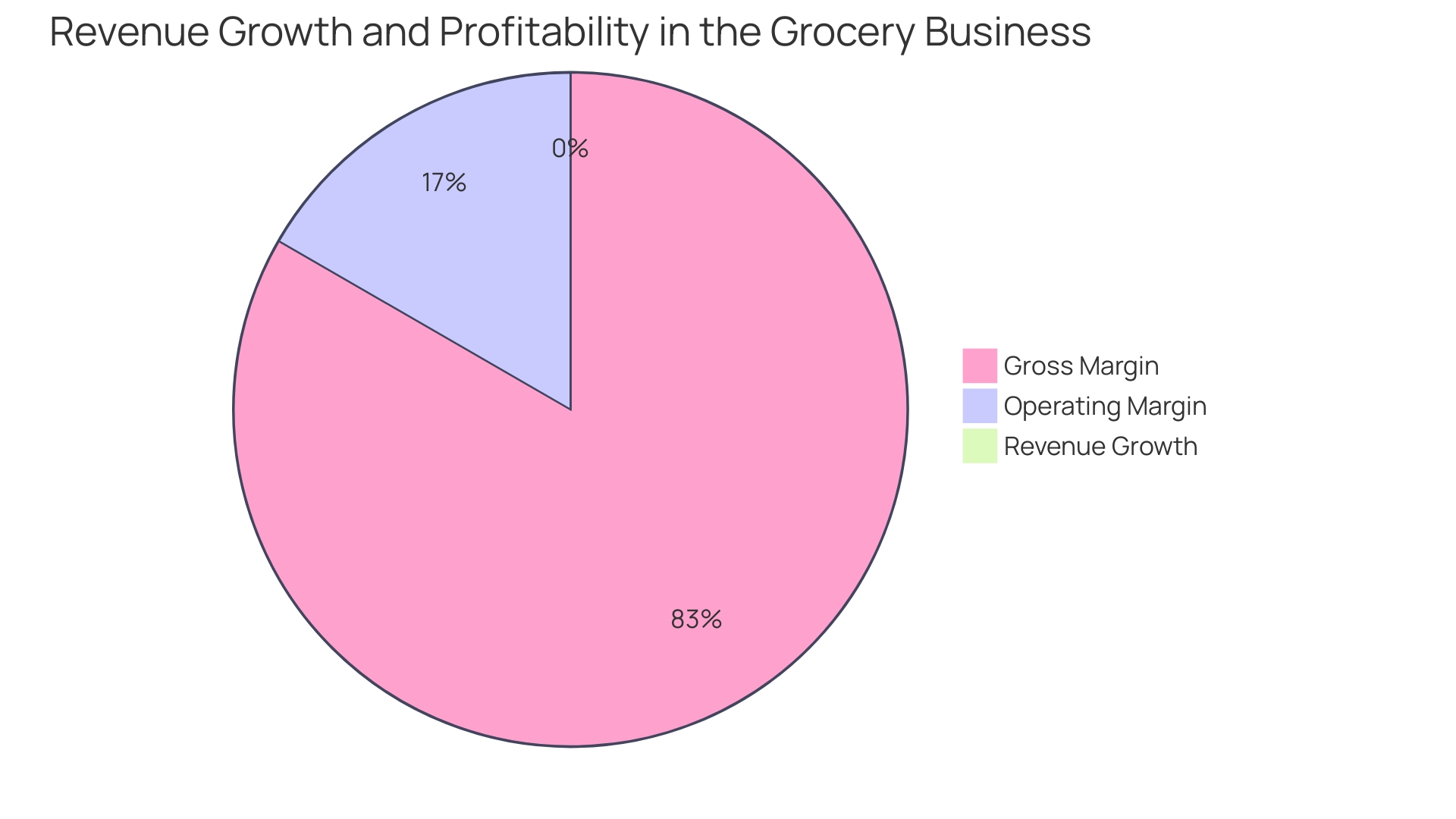
II. Emerging Trends in Supermarket Retail
Supermarkets today aren't simply places to purchase groceries; they are becoming hubs of innovation and personalization, reflecting broader trends in retail. As we look to the future of the supermarket industry, several key trends emerge that are reshaping the shopping experience. Leveraging artificial intelligence, retailers are offering personalized marketing, which anticipates customer needs and simplifies the decision-making process, as noted by Suresh Kumar of Walmart Inc.
This shift towards personalized shopping experiences is a direct response to consumers' expectations for relevance and convenience in their interactions with supermarkets.
The integration of technology is also leading to the development of checkout-free stores, as seen in the new Dublin Town To Go store in Ireland, where Zippin technology allows for a seamless purchase experience. Similarly, the Finnish co-operative retailer S Group's adoption of electronic shelf labels for their 1,000+ retail outlets is a testament to the growing importance of digital solutions in physical stores.
Sustainability continues to be a significant concern for consumers, with a McKinsey & Co. survey revealing that two-thirds of shoppers, and three in four millennials, consider sustainability when making purchases. This has prompted supermarkets to incorporate sustainability into their core operations, with initiatives focusing on sourcing sustainable materials, reducing waste, and adopting ethical practices to meet consumer demand and build loyalty.
Moreover, the economic landscape is influencing consumer behavior, with a Deloitte survey indicating that many are living paycheck to paycheck, making budget-conscious decisions. This economic pressure is leading supermarkets to find innovative ways to offer quality and value to their customers, often through technology that streamlines operations and enhances service.
Finally, the revival of physical stores is shaping the future of supermarket retail. The concept of the 'phygital' store, which blends the physical and digital realms, is becoming increasingly popular. It acknowledges that while consumers use online platforms for convenience, they also crave immersive in-store experiences that offer engagement and discovery beyond a simple transaction.
These trends underline a single, powerful insight: success in the supermarket industry hinges on the ability to proactively predict and meet individual customer needs with a tailored, timely, and technology-enhanced shopping journey.
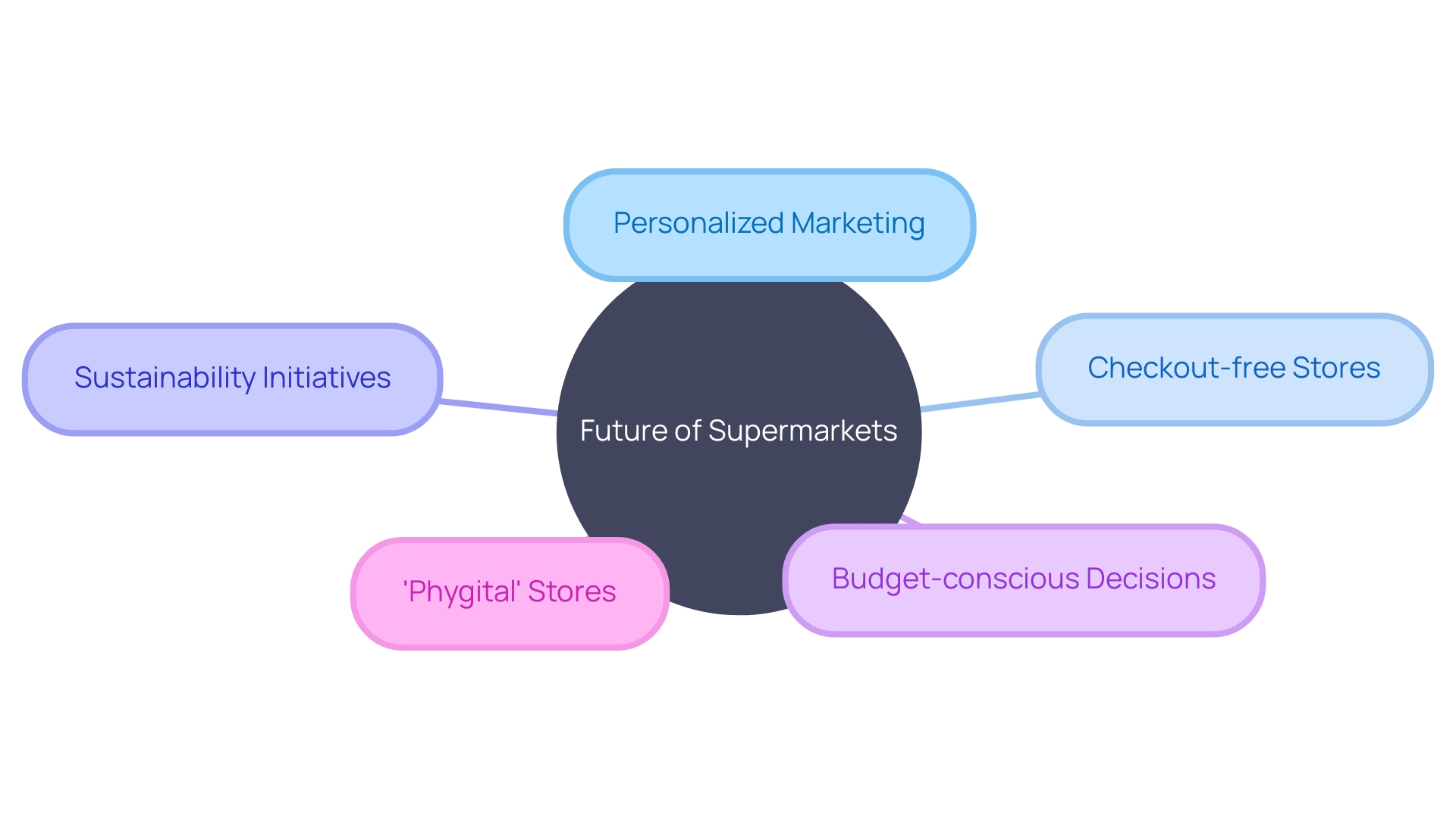
III. Case Study: Successful Implementations of Future Supermarket Concepts
Supermarkets are rapidly embracing innovative technologies to redefine shopping experiences. By integrating augmented reality (AR), customers are now able to visualize products in their own space before making a purchase. This immersive approach, as seen with Best Buy's AR Viewer feature within their mobile app, allows for a more interactive and confident shopping decision.
Similarly, AI-powered stores like Carrefour's Buy Bye in Belgium showcase the efficiency of autonomous checkout systems. Shoppers can select their items, have their products weighed automatically, and complete the purchase in as little as 15 seconds, all without traditional checkout lines.
Innovative store concepts are not limited to tech-forward cities. For instance, Downtown Spirits in Seattle has become the first beer, wine, and spirits retailer to adopt Amazon's Just Walk Out technology, offering a seamless, queue-free shopping experience. This technology utilizes advanced AI to track items taken or returned to the shelves, and upon exiting, customers' selected payment methods are automatically charged.
Regensburg, a city with a rich history and a strong presence in the automotive and tech industries, has become an innovation hub with Netto's new store near academic institutes and tech startups. This store stands out with its real-time automated receipt generation, further streamlining the shopping process. Such advancements not only enhance customer experience but also represent a shift towards a more sustainable retail environment, addressing the high return rates and subsequent waste in online shopping.
As the retail landscape continues to evolve, these case studies exemplify the potential of technology to meet emerging consumer needs and set the stage for future developments in the supermarket sector.
IV. Key Technologies Transforming the Shopping Experience
The retail landscape is undergoing a digital metamorphosis, and supermarkets stand at the forefront of this transformation. Pioneering technologies such as cashier-less checkout systems, which allow customers to scan their payment card and simply walk out with their purchases, are revolutionizing the way we shop. For instance, the Zippin technology implemented at Dublin Airport's new 'Dublin Town To Go' store exemplifies such advancements.
It employs cameras and weight-sensitive shelving to detect and charge for items, providing a seamless shopping experience for travelers.
Moreover, the integration of smart shelves is another innovation that supermarkets are rapidly adopting. These shelves not only track inventory in real-time but also enable superior management of stock levels, minimizing the risk of out-of-stock scenarios. The novel concept of real-time automated receipt capability, as seen in the progressive retail hub of Regensburg, home to Netto's innovative store, showcases this technology's potential.
Such systems are indicative of a larger trend where understanding consumer behaviors through AI and tailored data analytics is becoming a cornerstone for retail success.
As Lindsey Mazza, Global Retail Lead at Capgemini Group, shares, grasping the motivations behind consumer purchases unlocks significant growth for retailers. This is evident from the discussions at the Grocery shop conference in Las Vegas, where the embedded nature of AI in grocery retail was a central theme. Indeed, digital transformation is not just a buzzword; it's quantifiable, with Digital Leaders in retail witnessing marked sales growth over the past eight years, outstripping Digital Followers and Latecomers.
The trajectory of retail mirrors the historical pattern of electrification—it's not just about the immediate effects, but the profound secondary impacts that redefine industries. As we navigate this digital era, supermarkets must embrace these emergent technologies to cater to the expectations of a tech-adept consumer base and secure their competitive edge in a rapidly evolving marketplace.
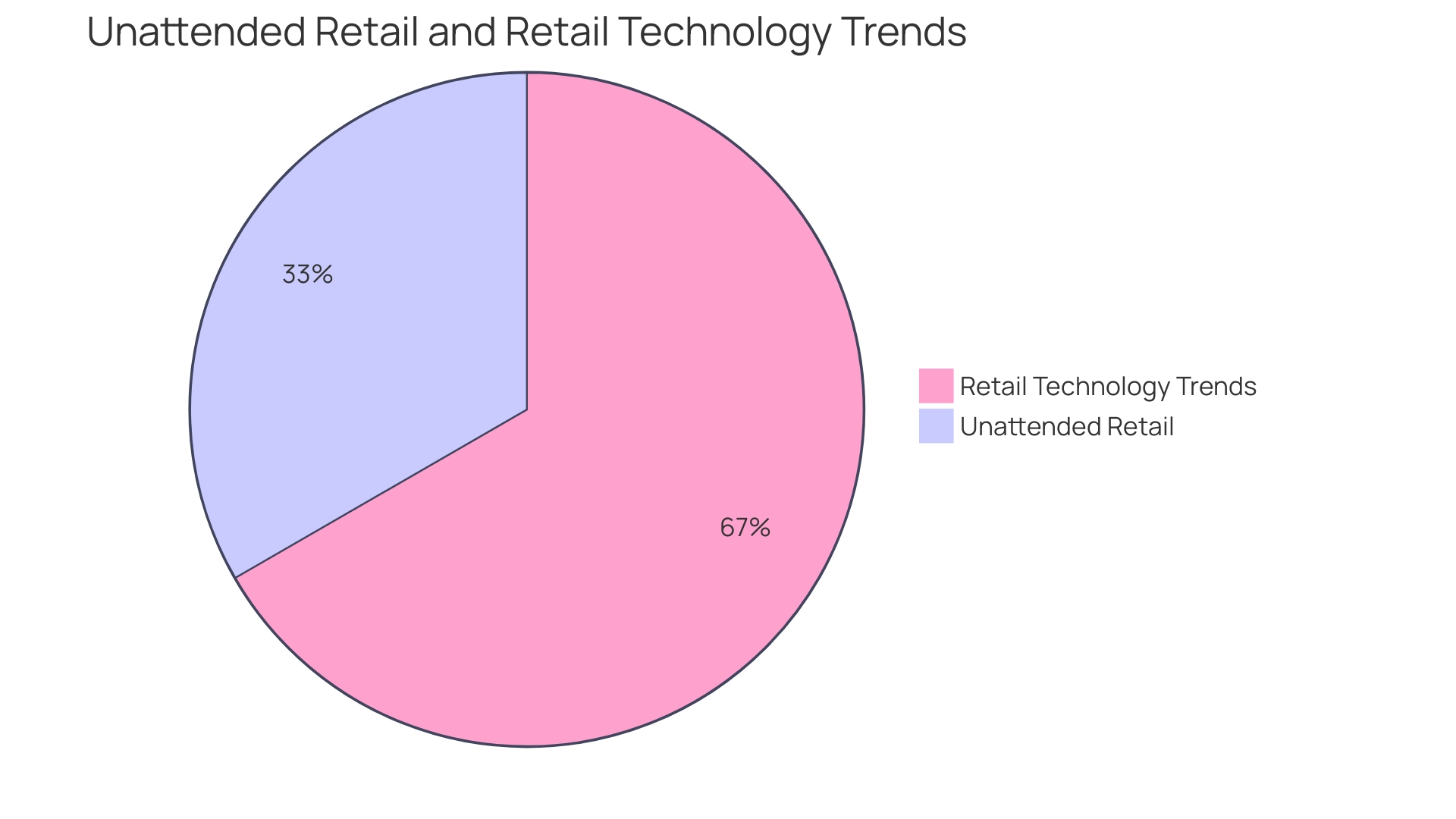
V. Consumer Behavior and Preferences in the Future of Supermarkets
As supermarkets navigate an ever-evolving landscape, they must keep a finger on the pulse of consumer behavior and preferences. With a proprietary survey of over 2,000 US consumers revealing insights into the shifting patterns of grocery shopping, it's clear that the demand for convenience, personalized experiences, and sustainability is shaping the future of supermarkets. Leveraging technology, such as AI tools for personalized marketing, is a key trend.
McKinsey & Co. reports that a significant portion of consumers factor sustainability into their shopping decisions, a sentiment echoed in the growth of online grocery shopping, where the integration of mobile banking and improved delivery services has played a pivotal role. However, this trend towards convenience is matched by an awareness of environmental impact, prompting consumers to seek more eco-conscious shopping experiences.
The shift in consumer preferences has also led to the rise of limited assortment and fresh format stores, offering a simplified layout with cost-effective store-brand products. This move aligns with the findings from an IBISWorld report, highlighting the trend towards premium, organic, and all-natural brands, which has bolstered revenue for grocers. Supermarkets are now implementing strategies to drive foot traffic and strengthen consumer loyalty, such as offering significant discounts and promotions.
Additionally, the success of partnerships like the one between Aldi and Too Good To Go in the UK underscores the importance of innovative solutions to food waste and cost savings. Through such initiatives, supermarkets are not only providing value to their customers but also contributing to environmental sustainability. With an increasing number of consumers planning to purchase groceries online, supermarkets must adapt to provide seamless and satisfying experiences that cater to the evolving landscape of consumer behavior.
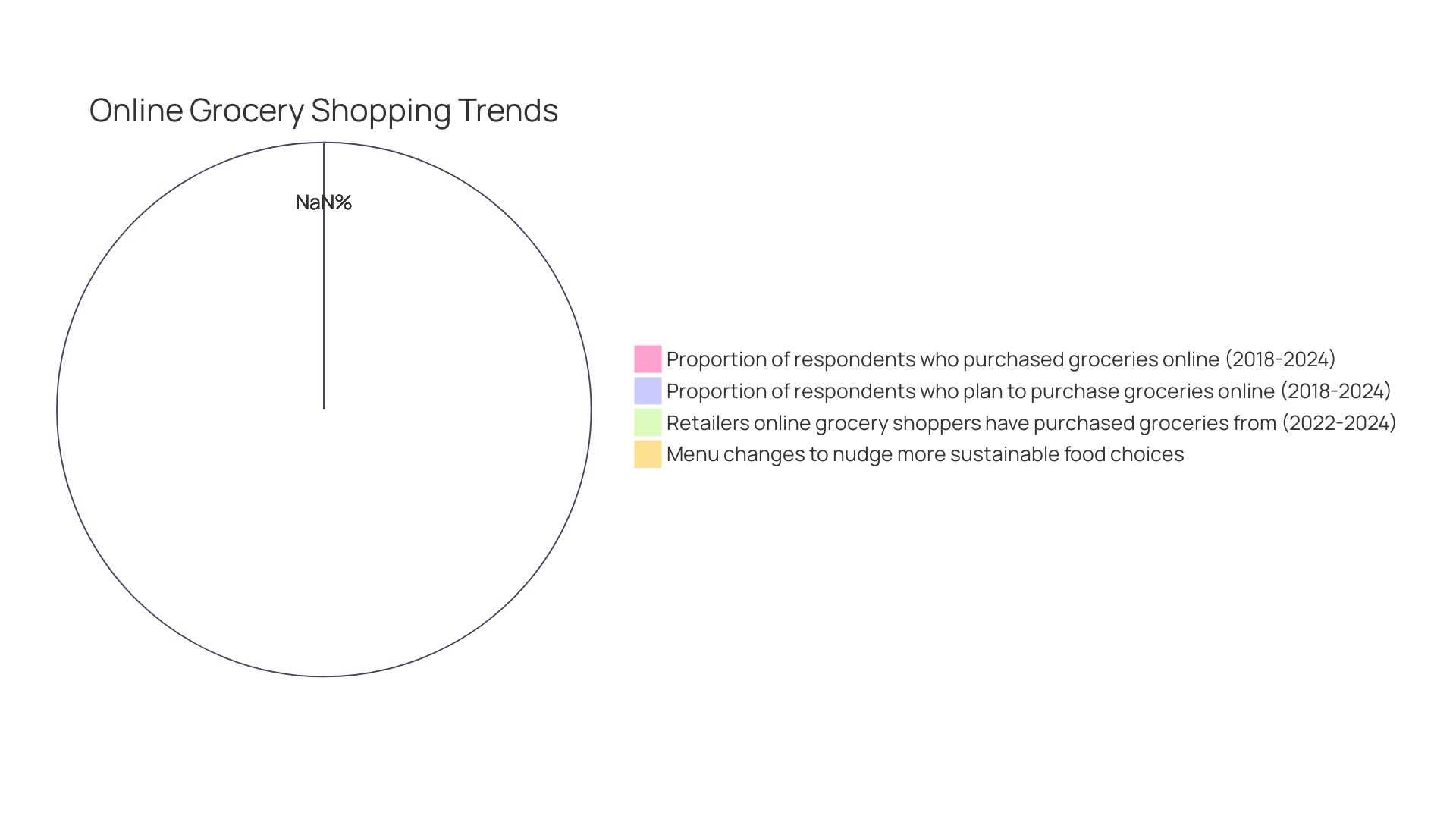
VI. Challenges and Opportunities in Implementing Future Supermarket Concepts
The integration of new technologies in supermarkets is a double-edged sword, presenting both opportunities and challenges. As the retail landscape evolves, with rapid delivery services and automation becoming more prevalent, supermarkets are under pressure to innovate and remain competitive. The case of a banana stand at a Food Lion grocery store in Virginia illustrates the need for smarter inventory management.
Despite the expectation of high profits, perishable produce like bananas often yields only 15% profit due to markdowns and waste. This is a stark reminder that advancements such as AI-driven inventory tracking and robotic fulfillment can significantly optimize profitability and reduce food waste. Meanwhile, the retail technology world is buzzing with influencers driving digital transformation, emphasizing the need for unified shopping experiences.
This calls for supermarkets to align their online and offline strategies, ensuring seamless and personalized shopping journeys. Embracing technologies like QR codes, smart shelves, and shopping carts is key to this transformation. However, the success of such innovations lies in their ability to address specific consumer needs.
As noted, not every new concept survives in the long term, but those that enhance the shopping experience and meet emerging demands will shape the future of retail. The industry is learning that while robots and AI can streamline operations, they require orderly and predictable tasks to function efficiently. The challenge lies in organizing the chaos of retail to feed this 'robotic beast' effectively.
Supermarkets must first streamline their inbound processes to fully harness the potential of automation, considering the complexities of large distribution centers and the growing difficulty in manual labor recruitment. Ultimately, the pursuit of innovation in supermarkets is not just about adopting new technologies but about creating a customer-centric ecosystem that leverages these tools to meet and exceed consumer expectations.
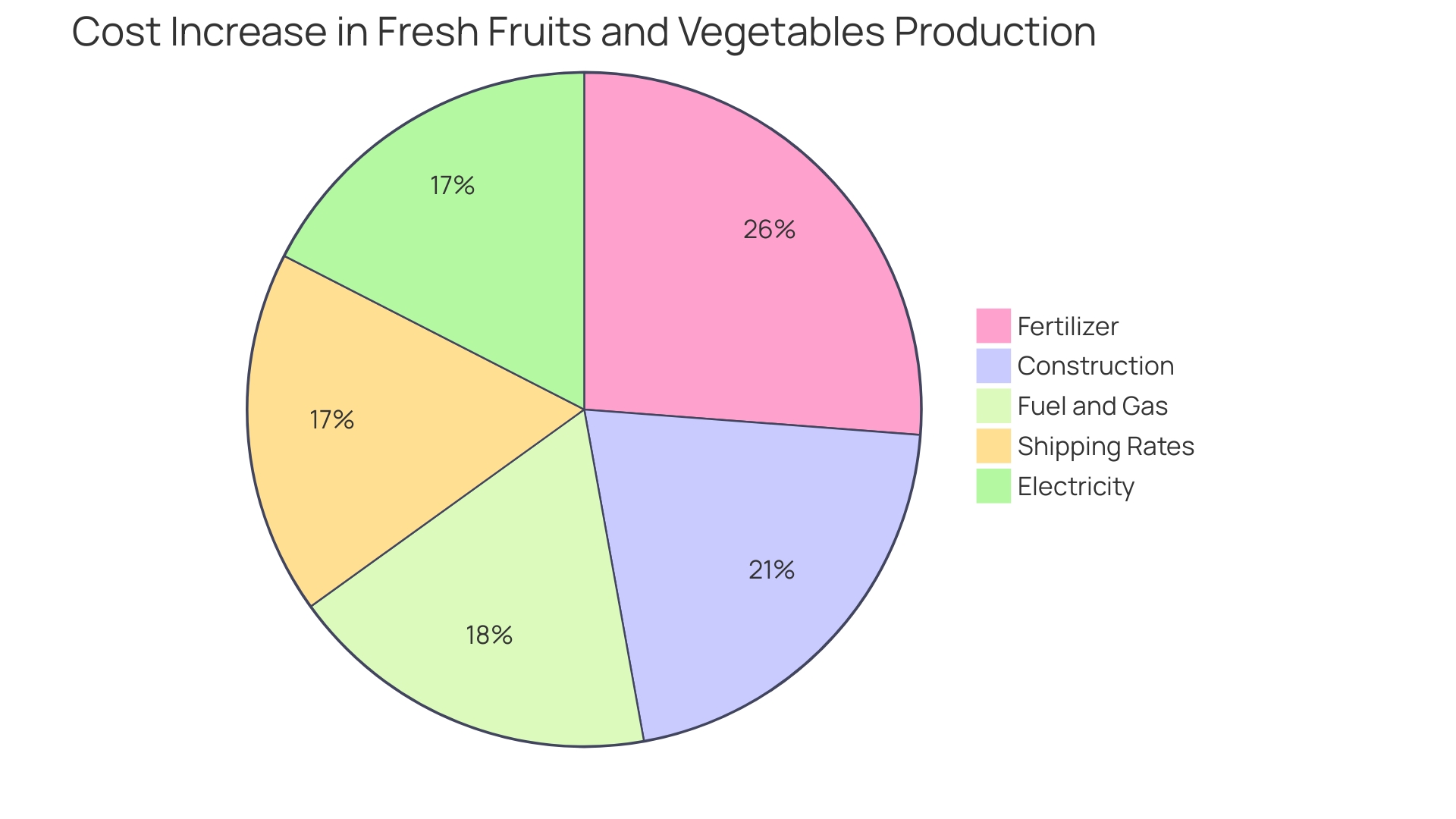
VII. Best Practices for Supermarkets to Adapt to Future Trends
Embracing the Phygital Realm: Retailers must craft a shopping experience that blends the tactile allure of physical stores with the convenience of digital browsing. By adopting a 'phygital' strategy, retailers create a seamless transition between online and in-store shopping, catering to customers who expect to engage with retailers through multiple touchpoints. As the retail industry evolves, a digital-physical hybrid model will become increasingly relevant, offering customers a unified and immersive shopping journey.
Optimizing Produce Profitability: Supermarkets can increase their profitability and minimize waste by optimizing the pricing and sales strategies for perishable goods. A case in point is the banana pricing at grocery stores, where profit margins typically drop from 40% to 15% due to markdowns as the fruit's appeal wanes. Supermarkets can leverage data analytics to adjust pricing dynamically, forecast demand more accurately, and thus reduce the frequency of markdowns and waste.
Automating for Efficiency: The story of Alimerka's partnership with Cimcorp exemplifies the benefits of automation in retail operations. By automating processes, Alimerka achieved significant improvements in efficiency, staff training, and specialization. This investment in technology not only optimized their internal processes but also enhanced the quality and transparency offered to consumers.
Sustaining Retail with Sustainability: The current market trend underscores the importance of sustainability in retail. Consumers are actively seeking out eco-friendly products and are more aware of corporate practices. Retailers that commit to sustainable sourcing and ethical practices are not only meeting consumer demands but are also fostering a loyal customer base that appreciates their dedication to the environment.
Innovative In-store Experiences: The revival of brick-and-mortar stores is marked by the integration of innovative in-store experiences. Retailers are reimagining the physical shopping environment to offer unique and engaging experiences that cannot be replicated online. This approach not only attracts customers but also encourages them to spend more time and money within the store.
Retail's Ever-Changing Landscape: As highlighted by retail analyst Natalie Berg, the retail industry is in a constant state of flux, and retailers that fail to adapt risk obsolescence. Investing in innovation and technology is no longer optional but a necessity for survival in the competitive retail landscape.
VIII. Next Steps and Recommendations for Supermarkets
Supermarkets today are at a pivotal junction, where embracing cross-platform e-commerce is not just an opportunity but a requisite stride towards future-proofing their business. The integration of digital and physical sales channels into a cohesive consumer ecosystem is paramount. As seen with MediaMarkt, Europe's largest electronics retailer, harmonizing the customer journey across online and offline touchpoints has been crucial in adapting to changing consumer behaviors—where decision-making spans both realms and brand consideration intensifies.
For instance, customers increasingly expect the flexibility of purchasing online with the option to pick up in-store, reflecting the channel-agnostic nature of contemporary shopping. The recent surpassing of online Dutch shop numbers over physical stores illustrates the shifting retail landscape and the necessity for supermarkets to leverage online tactics to bolster offline sales. Gabriël Dakdan's role in unifying MediaMarkt's digital and physical commerce is an exemplar of creating a seamless customer experience that resonates with evolving expectations.
In the face of disruptions like the Covid-19 pandemic, which has drastically altered shopping habits, supermarkets must innovate or risk obsolescence. The RTIH's list of Retail Technology Influencers and the emergence of shopping trends like checkout-free stores and the metaverse underscore the need for thought leadership in omnichannel success. Supermarkets must invest not only financially but also in time and effort to cultivate an irresistible online presence that complements their in-store experience.
Statistics further support the importance of digital transformation, with Digital Leaders achieving higher levels of growth across sales, profitability, and market share. A robust omnichannel proposition, underpinned by digital technologies, has been a significant growth driver. As noted by Gary Whittemore of the KPMG/RetailNext Retail Think Tank, perpetual innovation is critical in retail, and standing still equates to falling behind in a sector marked by perpetual disruption.
Ultimately, supermarkets must stay agile and collaborate with technology partners to revolutionize their offerings and deliver an exceptional shopping experience, thereby securing their place in the future of retail commerce.
Conclusion
Supermarkets face a critical moment as digital innovation transforms the retail landscape. To stay relevant, they must evolve and embrace technology. All-in-one platforms and autonomous supermarkets demonstrate the power of technology to streamline operations and enhance the customer experience.
By strategically adopting cutting-edge technologies, supermarkets can redefine their role in the digital era.
Emerging trends in supermarket retail, such as personalized marketing and checkout-free stores, are reshaping the shopping experience. Supermarkets must leverage artificial intelligence and digital solutions to meet consumer expectations for convenience and relevance. Sustainability initiatives are also crucial as consumers increasingly prioritize eco-conscious practices.
Successful implementations of future supermarket concepts showcase the potential of innovative technologies like augmented reality and AI-powered stores. These advancements revolutionize customer interactions and purchases, providing valuable insights into shopping habits without compromising anonymity.
Key technologies like cashier-less checkout systems and smart shelves optimize the shopping experience and retail operations. Understanding consumer behaviors through AI and data analytics is essential for success. Supermarkets must embrace these technologies to secure their competitive edge in a rapidly evolving marketplace.
Consumer behavior and preferences are shaping the future of supermarkets. Convenience, personalized experiences, and sustainability are driving the adoption of AI tools and eco-conscious initiatives. Supermarkets must adapt to provide seamless and satisfying experiences that cater to changing consumer demands.
Implementing future supermarket concepts presents both opportunities and challenges. Supermarkets must align online and offline strategies, streamline processes, and create customer-centric ecosystems. Embracing the phygital realm, optimizing produce profitability, automating for efficiency, and sustaining retail with sustainability are key practices.
To adapt to future trends, supermarkets must harmonize their digital and physical sales channels. Integration of touchpoints is paramount. Supermarkets must invest in innovation, cultivate an irresistible online presence, and remain agile to secure their place in the future of retail commerce.
In conclusion, supermarkets must embrace technology, personalize the shopping experience, prioritize sustainability, and adapt to evolving consumer preferences. By adopting innovative technologies, optimizing operations, and creating exceptional experiences, supermarkets can redefine their role and thrive in the digital era of retail.





